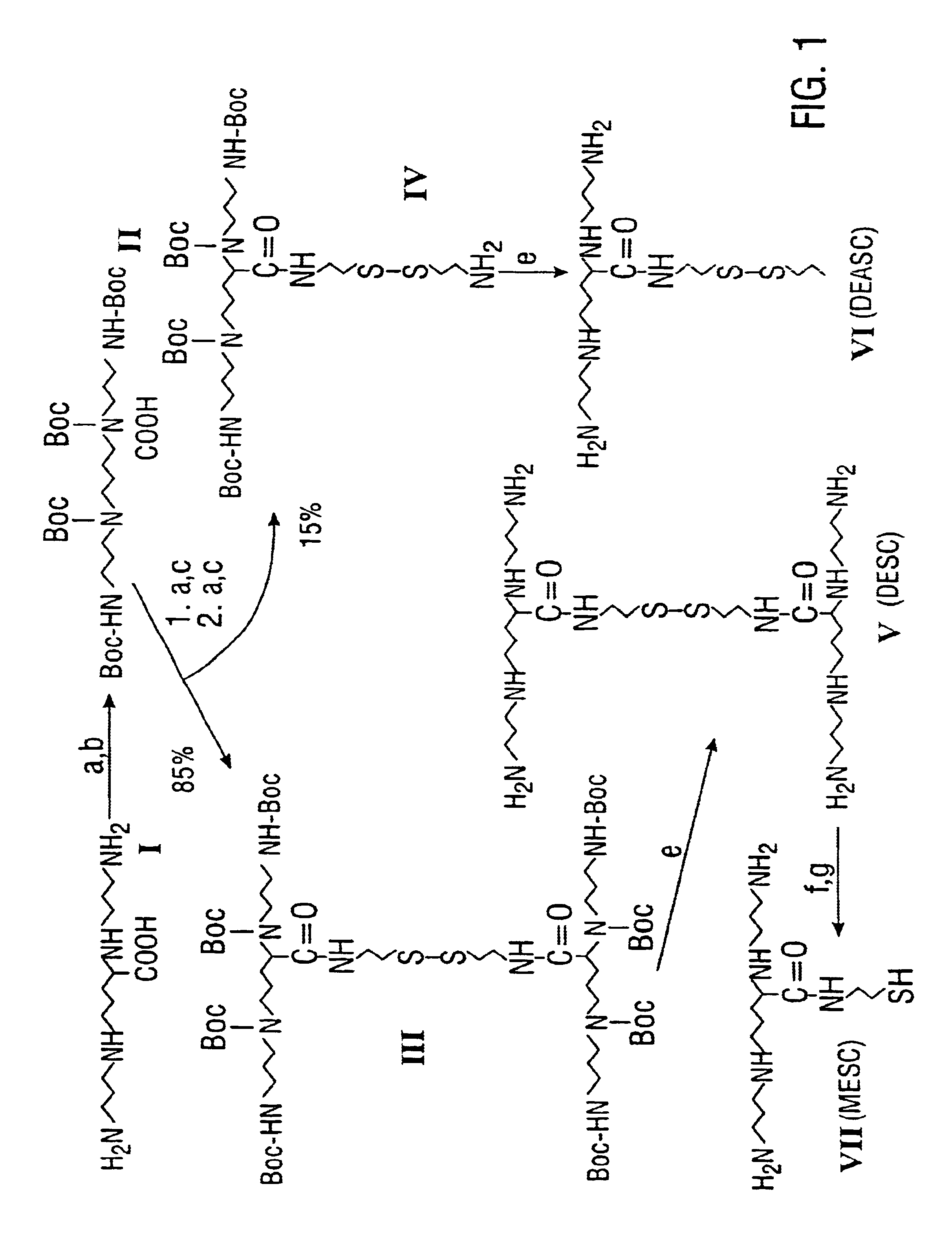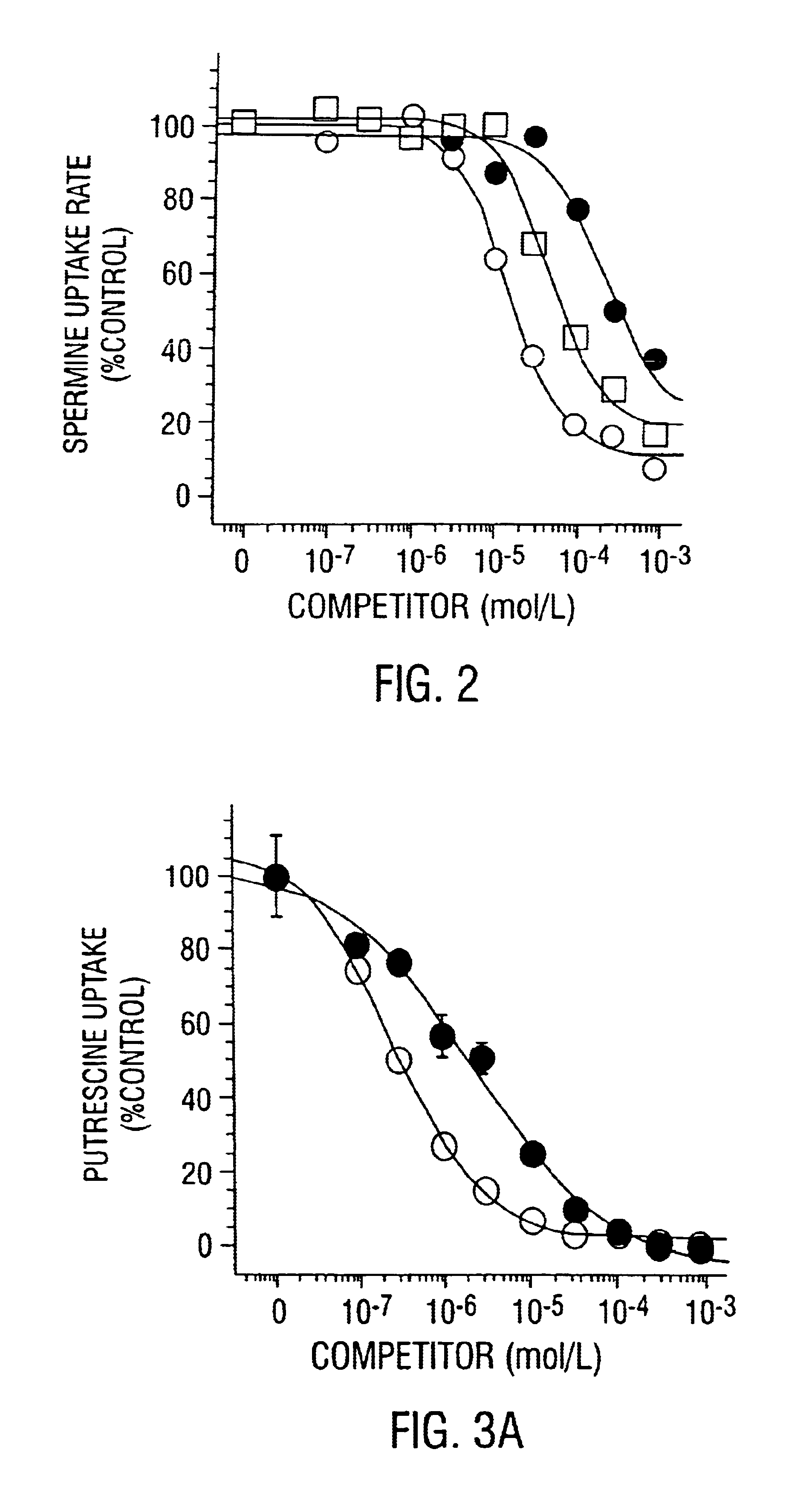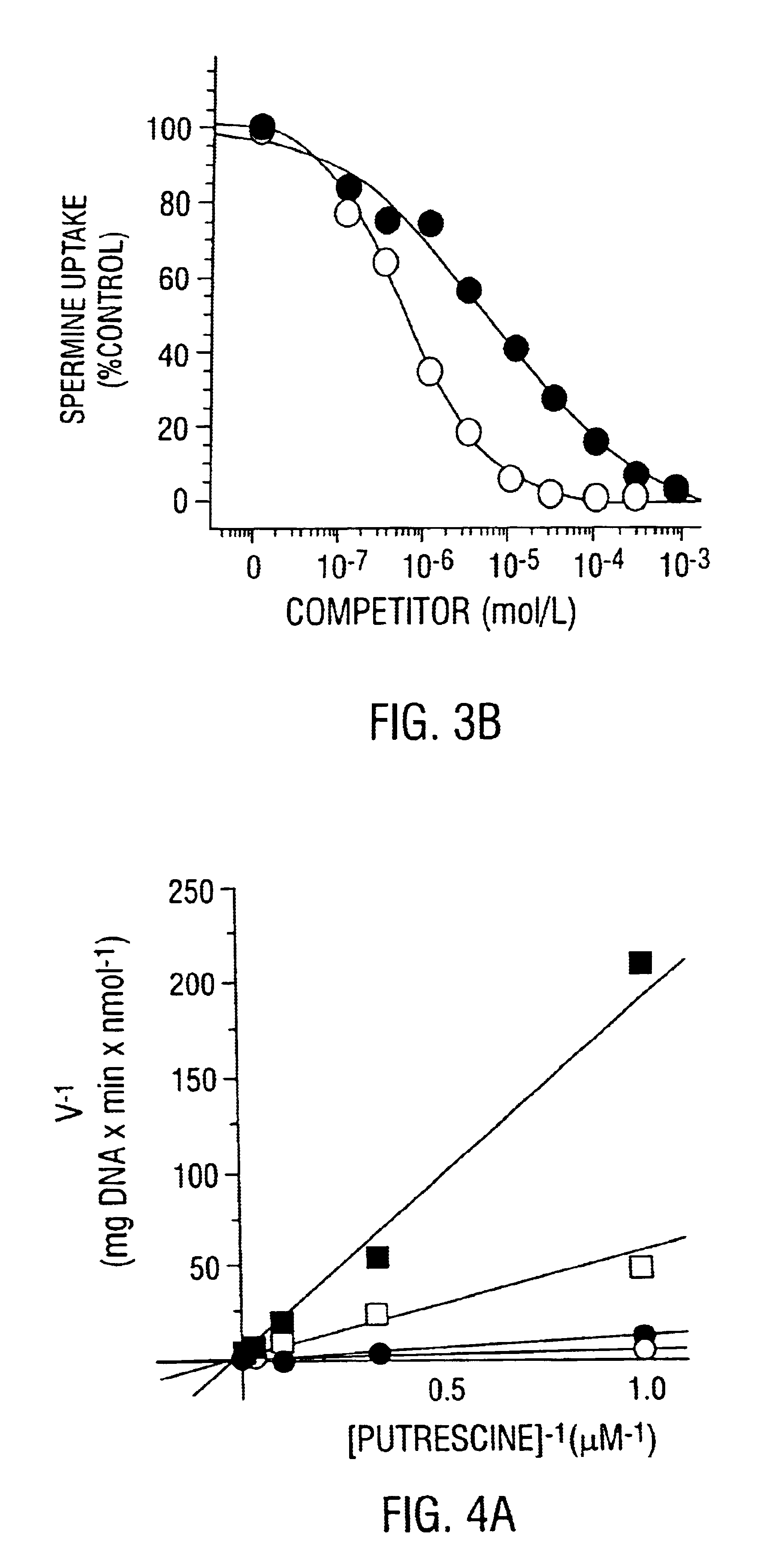Polyamine transport inhibitors
a technology of polyamine transport and inhibitors, applied in the field of polyamine transport inhibitors, can solve the problems of insufficient anti-cancer effect of such inhibitors in vivo, unclear whether such compounds can efficiently inhibit polyamine transport or are accumulated, and the mutant mouse leukemia cells deficient in polyamine transport are much more susceptible to growth inhibition than the parental strain, etc., to achieve low molecular weight, less susceptible to immunogenicity, and high affinity
- Summary
- Abstract
- Description
- Claims
- Application Information
AI Technical Summary
Benefits of technology
Problems solved by technology
Method used
Image
Examples
example 1
Effect of Inhibitors on Cell Proliferation
[0071]For growth studies, ZR-75-1 cells were cultured in MEZR medium or in phenol red-free RPMI 1640 supplemented with 2 mM L-glutamine, 1 mM sodium pyruvate, 15 mM Hepes, antibiotics, 1 nM 17β-estradiol, 0.5 μg of bovine insulin per ml and 5% (v / v) charcoal-treated fetal bovine serum (SD medium), as indicated in the text. When polyamines or polyamine analogs were added to serum-containing media, 1 mM aminoguanidine was added to inhibit bovine serum amine oxidase (BSAO) activity (Morgan, D. M. L. 1989, in The Physiology of Polyamines (Bachrach, U., and Heimer, Y. M. eds) Vol. I, pp. 203-229, CRC Press, Boca Raton). The effect of the transport inhibitors on cell growth was measured by incubating ZR-75-1 cells for 11 days in medium supplemented with antagonist, polyamines and / or 1 mM DFMO as indicated, followed by colorimetric determination of DNA content with 3,4-diaminobenzoic acid (Simard, J., Dauvois, S., Haagensen, D. E., Lėvesque C., Mėr...
example 2
Effect of Side Chain Length and Substituents on Spermidine Transport Inhibition by MESC Derivatives
[0083]The observation that MESC was a less potent inhibitor of diamine and polyamine transport than DESC and DEASC suggested that the nature of the side chain strongly influences the interaction of these compounds with the carrier. The thiol side chain of MESC was thus derivatized with substituting groups of different sizes and charges through thioether linkage with three different iodoacetamides, namely LY iodoacetamide, ASIB and iodoacetamide itself, and the ability of the resulting complexes (MESC-LY, MESC-ASIB, and MESC-acetamide, respectively) to inhibit spermidine uptake was then evaluated. These studies were conducted using CHO-K1 cells. As shown in FIG. 5, derivatization of the thiol group of MESC did not significantly (P>0.10) increase the Ki toward spermidine uptake for the three conjugates studied. In the case of MESC-ASIB, Ki values might have been underestimated by partial...
example 3
Lack of Permeation of DESC and MESC through the Polyamine Transport System
[0084]The ability of ZR-75-1 cells to accumulate DESC and MESC was determined. Since DESC was eluted as a late, broad peak in the HPLC system used, DTT was added to cell extracts to reduce DESC to MESC and decrease the detection threshold. Results are shown in Table II. ZR-75-1 cells were incubated for 1 or 8 hours in MEZR medium in the presence of 50 or 200 μM DESC or MESC prior to determination of polyamine contents. CHX was added at 200 μM where indicated. Other details are provided under “Materials and Methods.” Values are the mean±SD of triplicate determinations from 2 independent experiments.
[0085]
TABLE IIIntracellular Accumulation of DESC and MESC in ZR-75-1 CellsTimePolyamine intracellular contents (nmol / mg protein)Addition(h)SpermidineSpermineDESCMESCControl10.69 ± 0.088.22 ± 0.48——6 0.91 ± 0.07a9.16 ± 0.13——+50 μM10.81 ± 0.148.27 ± 0.81DESC60.73 ± 0.118.60 ± 0.29+200 μM10.79 ± 0.118.77 ± 0.79DESC60....
PUM
| Property | Measurement | Unit |
|---|---|---|
| Chemical shifts | aaaaa | aaaaa |
| Chemical shifts | aaaaa | aaaaa |
| pH | aaaaa | aaaaa |
Abstract
Description
Claims
Application Information
 Login to View More
Login to View More - R&D
- Intellectual Property
- Life Sciences
- Materials
- Tech Scout
- Unparalleled Data Quality
- Higher Quality Content
- 60% Fewer Hallucinations
Browse by: Latest US Patents, China's latest patents, Technical Efficacy Thesaurus, Application Domain, Technology Topic, Popular Technical Reports.
© 2025 PatSnap. All rights reserved.Legal|Privacy policy|Modern Slavery Act Transparency Statement|Sitemap|About US| Contact US: help@patsnap.com



